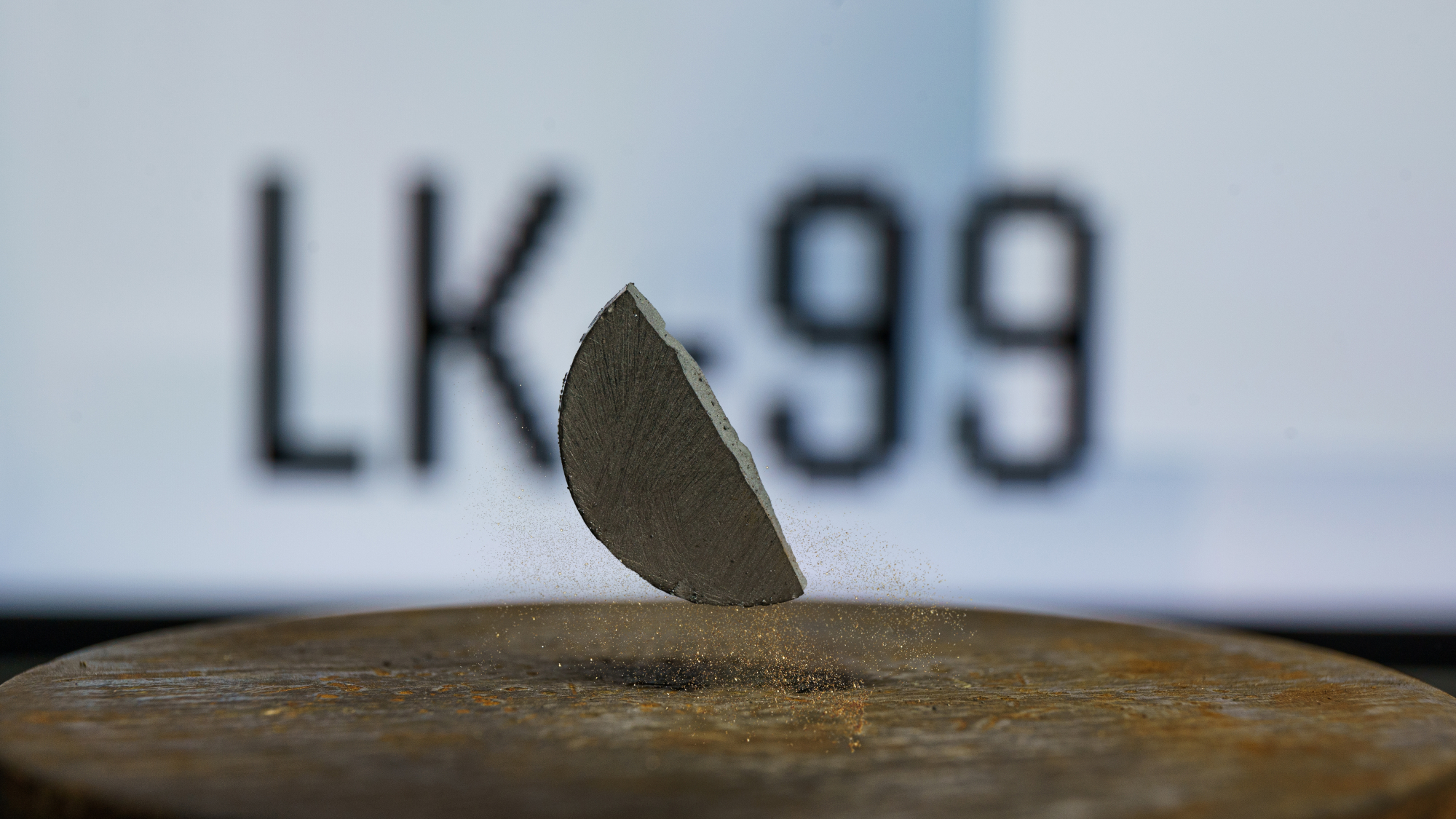Alleged Superconductor LK-99 Might Need 'Doping' to Work
Scientists have failed to prove LK-99 is a superconductor so far.

The prospects of LK-99, the controversial substance that its discoverers claim is a room temperature superconductor, living up its hype are dimming. In recent days, many scientists have synthesized the substance and published studies showing that it does not have superconductive properties, at least in the form that they tested it. However, two papers published to pre-print scientific repository Arxiv posit that LK-99 could, maybe, prove to be a superconductor if only some doping were applied.
Doping LK-99 is exactly what it sounds like: you take something that wasn't in the original recipe (in this case, for lead-apatite) and you put it inside the system to improve its performance. In this case, the new results, penned by Liang Si et al and Korotin et al, find reason to believe that doping LK-99 by inserting extraneous atoms (which weren't supposed to exist in the original system) might result in the claimed superconductivity. We say "might" because they haven't actually created and doped the substance.
Although initial analysis from other teams found that LK-99 already had the 'Fermi' flat bands necessary for electrons to cross unimpeded and frictionlessly (as they'd need for the zero resistance claim to be true), others have theorized that it needs some help getting there: there's still work to do to even understand LK-99. Achieving the exactly-precise configuration of particles and quantum particles (quanta) is hard.
There are two kinds of LK-99 researchers right now: the experimentalists (who have attempted to synthesize LK-99 and physically verify its properties) and the software simulation wizards (they're all still quantum scientists, just to be clear). Those who have actually attempted to synthesize LK-99 and then analyze the sample have found no real proof of superconductivity. Some have shown the substance magnetically levitating and researchers at Southeast University in Nanjing claim that they measured zero resistance at -163 degrees celsius.
The computer models are more bullish, positing that there are scenarios where this could become a superconductor. None of them prove so conclusively - they're just simulations, after all. And these simulations too have to make assumptions based on the available LK-99 data.
Confirming this gap between theory and practice, there are also new results on the experimental front. The work done by Andrew McCalip on LK-99 synthesis resulted in a small LK-99 fragment, which was analyzed with the help of the USC Materials Consortium. The conclusion is what we'd expect, as we've covered here at Tom's Hardware: the biggest issue stems with the experimental synthetization process.
Andrew McCalip explains how even by using 99.99%-purity precursors (precursos being the initial chemical agents made to react with one another to generate the final compound), there were still enough impurities in them that their resulting LK-99 included micrograms of simple iron (Fe). Iron being a ferromagnetic material, its presence (even in the decimals) was enough to induce magnetic responses in the LK-99 samples they cooked. When you're dealing with the quantum realm, even a wary, unwelcome subatomic particle can throw a wrench at the partying particles.
Get Tom's Hardware's best news and in-depth reviews, straight to your inbox.
There's a chance that this is what the end of the LK-99 road looks like; a field of failed replications finding solace in the presence of other elements that might be the cause of LK-99's behavior. But there's also a chance that this isn't the end of the line, and that increased scrutiny and improvements to the synthetization process (perhaps paired with some additional data from Korea) will approximate theory and practice.
Published results looking at LK-99 will only increase in the foreseeable future, as different teams across the world finish their replication and simulation attempts. It remains to be seen how history remembers LK-99; perhaps it's just the latest overhyped disappointment. Or maybe doping will change the game. However it ends, it was a fun run where material science inspired the public's imagination.

Francisco Pires is a freelance news writer for Tom's Hardware with a soft side for quantum computing.
-
toffty Another story?Reply
Put it to rest. The scientific method has quickly shown that this 15 year old material was never a superconductor. This is why the media needed to wait for the results to come in. Instead science gets dragged through the mud. -
peterf28 Nice story. I already imagined humanity levitating into space. But other superconductors which require lower temperature are superconducting in space. I think there's is a connection between gravity, superconductivity and temperature.Reply -
Giroro Did we seriously expect this material to be independently replicated and verified in 4 days?Reply -
Alvar "Miles" Udell It wouldn't be the first time that an unknown impurity resulted in a breakthrough, but it'd also be far from the first time a supposed breakthrough was false.Reply -
miket928 Please, please stop writing the phrase "synthetization process." It's been used in all your articles on the subject. The word you're looking for is "synthesis." The chemists are agonizingReply -
Eximo Reply
1) Not how magnetic levitation works, you still need to push off something.peterf28 said:Nice story. I already imagined humanity levitating into space. But other superconductors which require lower temperature are superconducting in space. I think there's is a connection between gravity, superconductivity and temperature.
2) Space is cold in the shade, yes.
3) Even things in orbit are under the influence of gravity, freefall is a little different. GPS satellites and things still experience the slowdown of being near the Earth, and also their speed to maintain orbit. -
Brian28 Reply
Gravity has nothing to do with it. Space is neither hot nor cold. It is essentially empty, which means there is no heat transfer other than photons. Those photons can heat you up, if they come from something hot like the sun, or warm like the earth, or photons can cool you down if you send them away from a radiator. If you can stay in the shade, then yes, you can get temperatures appropriate for low temp superconductors to work.peterf28 said:Nice story. I already imagined humanity levitating into space. But other superconductors which require lower temperature are superconducting in space. I think there's is a connection between gravity, superconductivity and temperature.